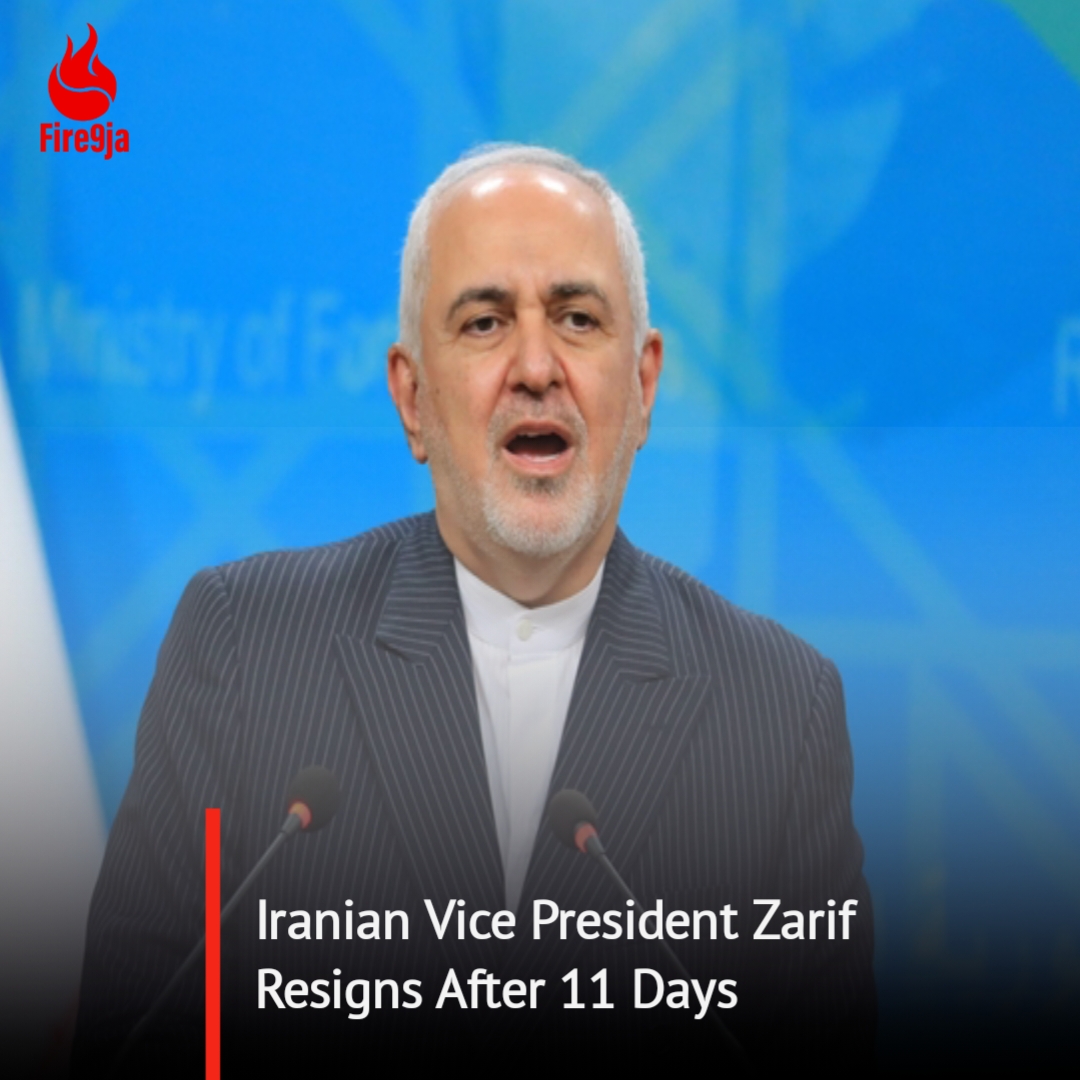News
Iranian Vice President Zarif Resigns After 11 Days

Iran’s Vice President, Mohammed Javad Zarif, has stepped down from his position only 11 days after his appointment.
Zarif announced his resignation via his social media platform, expressing dissatisfaction with his role and regret over his inability to meet expectations.
Zarif’s resignation is attributed to disagreements over the selection of ministers for President Massud Pezeshkian’s new cabinet.
Zarif indicated that the composition of the cabinet did not align with his preferences, noting that at least seven of the 19 nominated ministers were not his first choices.
This resignation marks the second significant challenge for President Pezeshkian since he assumed office at the end of July.
The first crisis involved the assassination of Hamas leader Ismail Haniyeh in Tehran. Zarif, who was a crucial ally during Pezeshkian’s presidential campaign, had been instrumental in the campaign’s success due to his popularity.
Following the election, Zarif and his team were tasked with recommending candidates for key government positions to help implement promised reforms.
However, the cabinet list presented by Pezeshkian was seen by observers as inconsistent with the reform plans. Speculation suggests that Iran’s conservative hardline faction may have influenced the ministerial appointments.
Zarif, who previously served as Iran’s chief diplomat from 2013 to 2021 and played a key role in negotiating the 2015 nuclear agreement, was expected to contribute significantly to Pezeshkian’s foreign policy and the resumption of nuclear negotiations.
The hope was that with a new team, Pezeshkian could address the economic sanctions impacting Iran’s economy.
News
Analyst Says Tinubu Not Responsible for Recent U.S.-Linked Airstrike Claims

Nigerian news analyst, Mahmud Jega, has shared his opinion on the recent airstrike carried out by the United States in Nigeria, stating that Nigerians should not blame President Bola Tinubu for the incident.
Jega made this statement during a recent interview, where he said he does not believe many people will hold the Tinubu administration responsible, as Donald Trump had issued threats against Nigeria long before Tinubu’s administration.
“No, I don’t think many people will blame the Tinubu administration for what is happening now because President Donald Trump, when he first made the threats, it was clearly not in coordination with the Tinubu administration or the government of Nigeria,” Jega said.
News
United States Launches Airstrike on ISIS Targets in Northwest Nigeria

It has been reported that the United States carried out an airstrike targeting ISIS in the northwest region of Nigeria. The order was reportedly given by former U.S. President Donald Trump.
“Tonight, at my direction as Commander in Chief, the United States launched a powerful and deadly strike against ISIS terrorist elements in northwest Nigeria,” Trump said.
He added, “I have previously warned these terrorists that if they did not stop the slaughtering of Christians, there would be hell to pay, and tonight, there was.”
News
Federal Government Declares Holidays as the Festive Season Draws Near

The Federal Government of Nigeria has officially declared the holiday dates for the festive season.
Thursday, December 25 will be observed as Christmas Day, December 26 as Boxing Day, and Thursday, January 1 as New Year’s Day.
The declaration was made by the Permanent Secretary of the Ministry of Interior, Dr. Magdalene Ajani. He also added that Nigerians should celebrate the holidays in faith and pray for the nation.





















